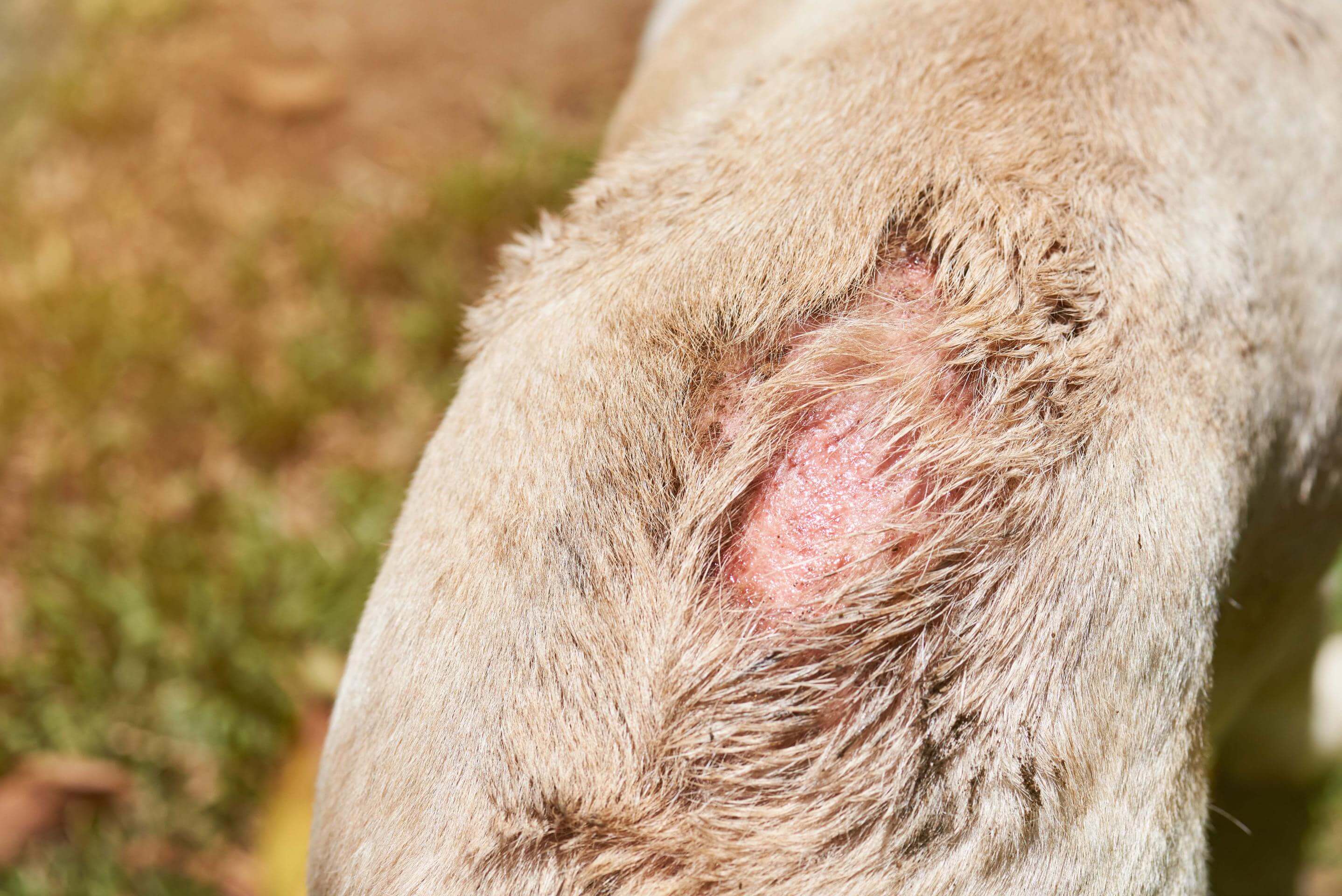Dr. Ashly LaRoche
Many dog owners have dealt with malodorous (stinky), crusty, itchy patches of skin, particularly in dogs, known as hot spots. The medical term for this condition is pyotraumatic dermatitis. Pyo means pus or infection and traumatic means due to trauma. Typically, the dog or cat starts to itch and breaks the skin barrier. The bacteria on the surface of the skin take advantage of this “break” and overgrow. This leads to a superficial skin infection in the area of the scratch, which oozes pus. The infection leads to increased itch and irritation, quickly worsening the hotspot. The hair crusts and mats over the site. Hot spots can be quite painful and spread quickly, hence prompt treatment is recommended. Thankfully, most hotspots are not deep in the skin and are fairly mild. Depending on the size and severity, topical corticosteroid sprays, clipping and disinfecting the area, and the addition of systemic antibiotics are used to treat hot spots. Some dogs with ear infections get hotspots on the side of the face under the ear due to scratching at the ears. In some cases, moisture under thick fur can lead to moist inflammation and itching of the area and subsequently result in a hotspot. Certain breeds of dog such as the Golden Retriever and Labrador Retriever , seem to be more prone to hotspots and may have a genetic component. Prevention is typically preventing conditions that cause itching. Flea control, seasonal allergy control, proper grooming and treating ear infections promptly are all necessary for prevention.


